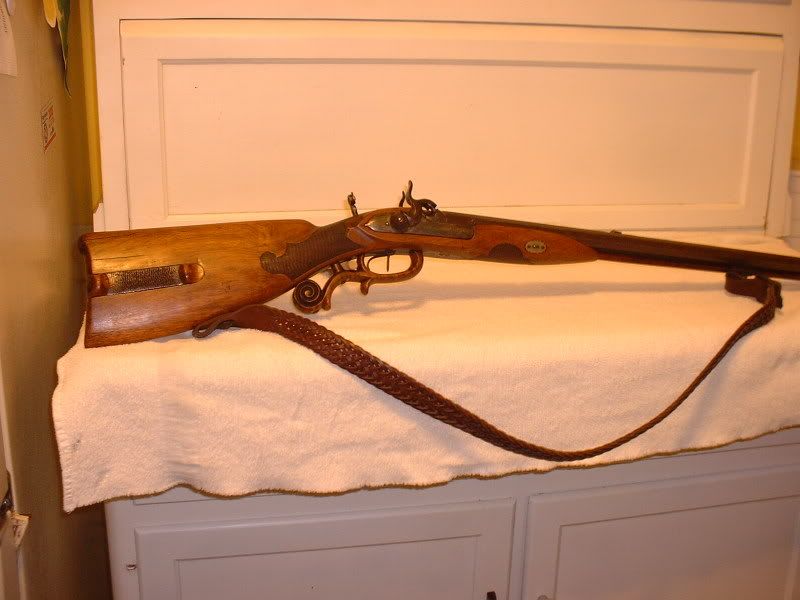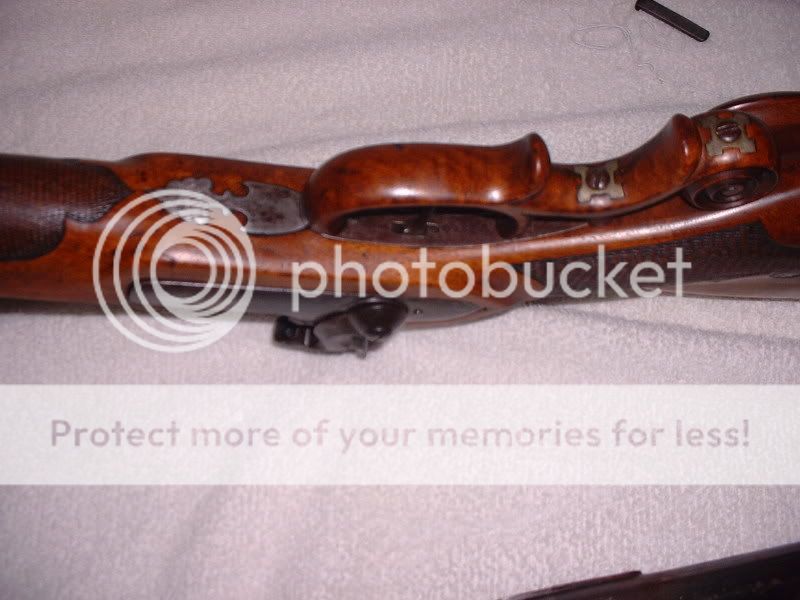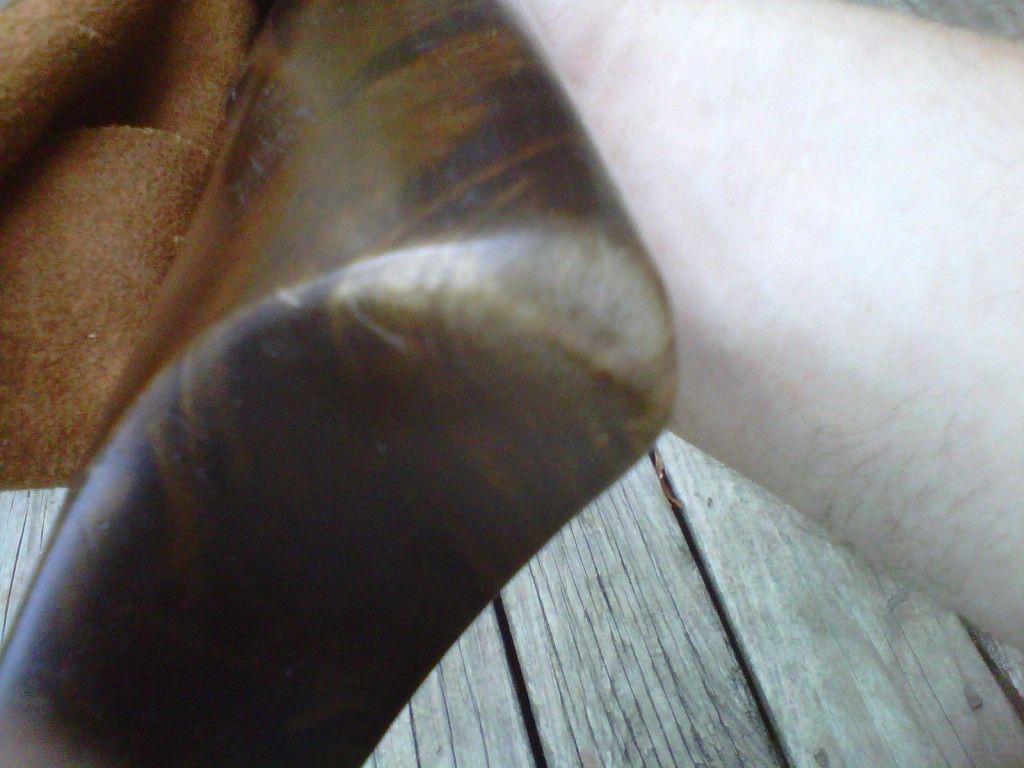Larry Pletcher
50 Cal.
- Joined
- Jul 27, 2006
- Messages
- 1,313
- Reaction score
- 67
The lock retaining screws sit flush on the wood. I'd add that the web between barrel and ramrod is thinner than the forward lock screw diameter. The screw is relieved in order for the ramrod to pass. There is an indexing mark on the screw for alignment. There is no extra wood on this gun anywhere.
Regards,
Pletch
Regards,
Pletch









